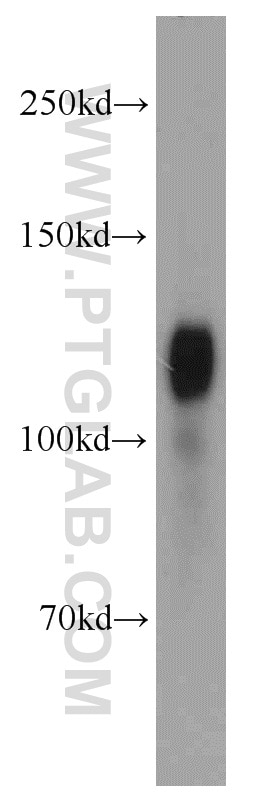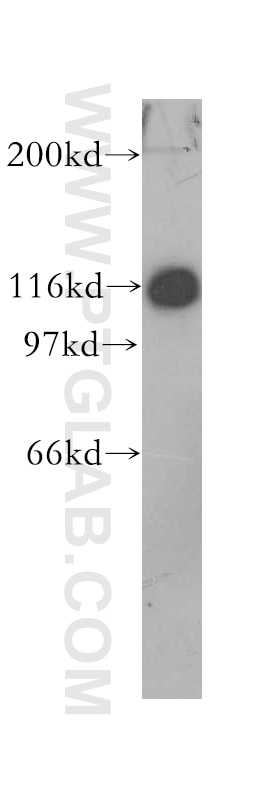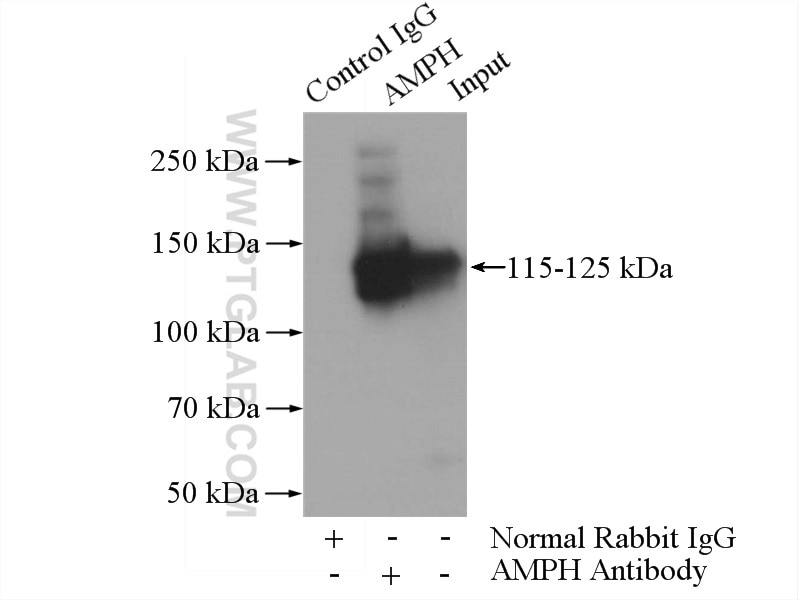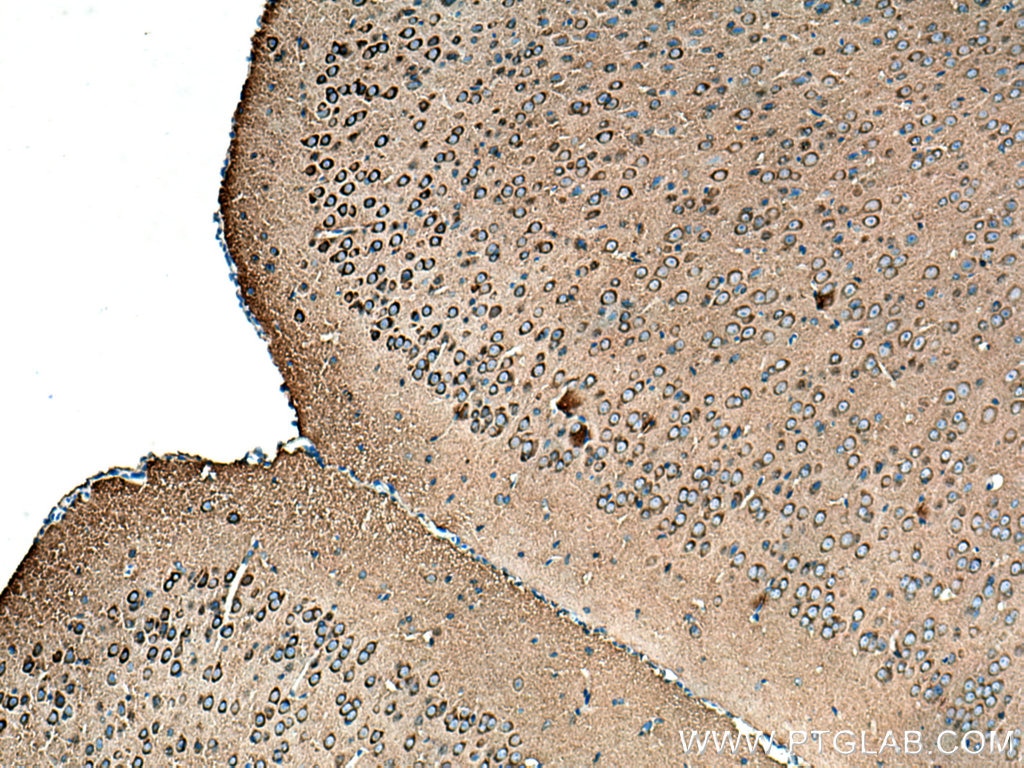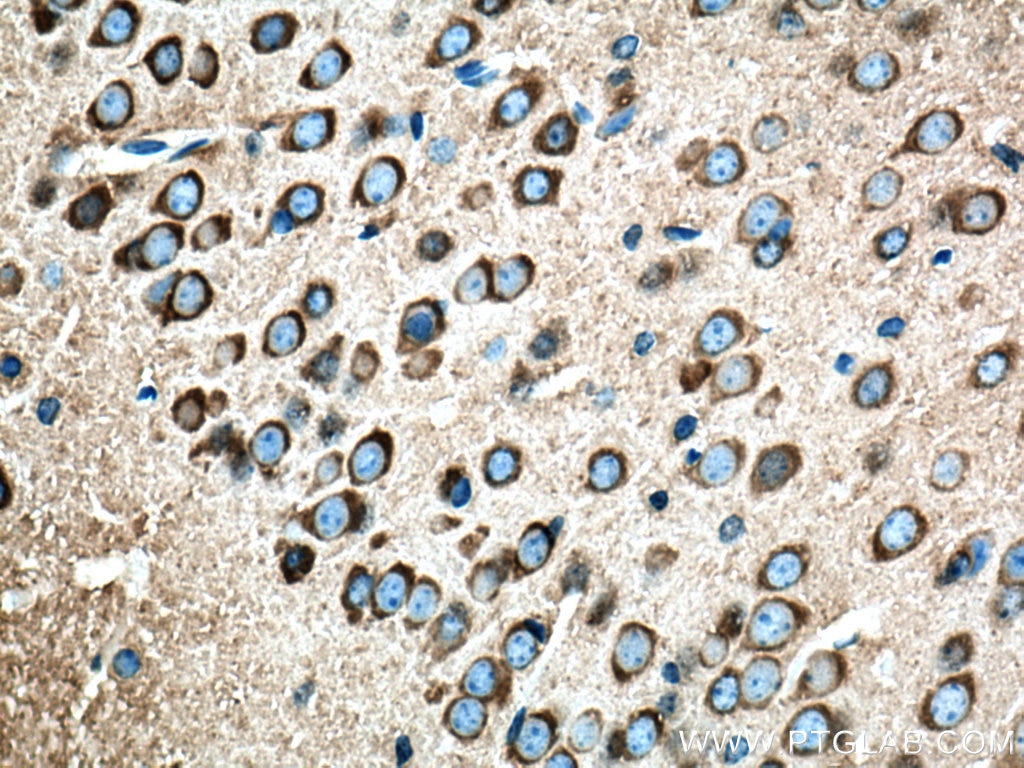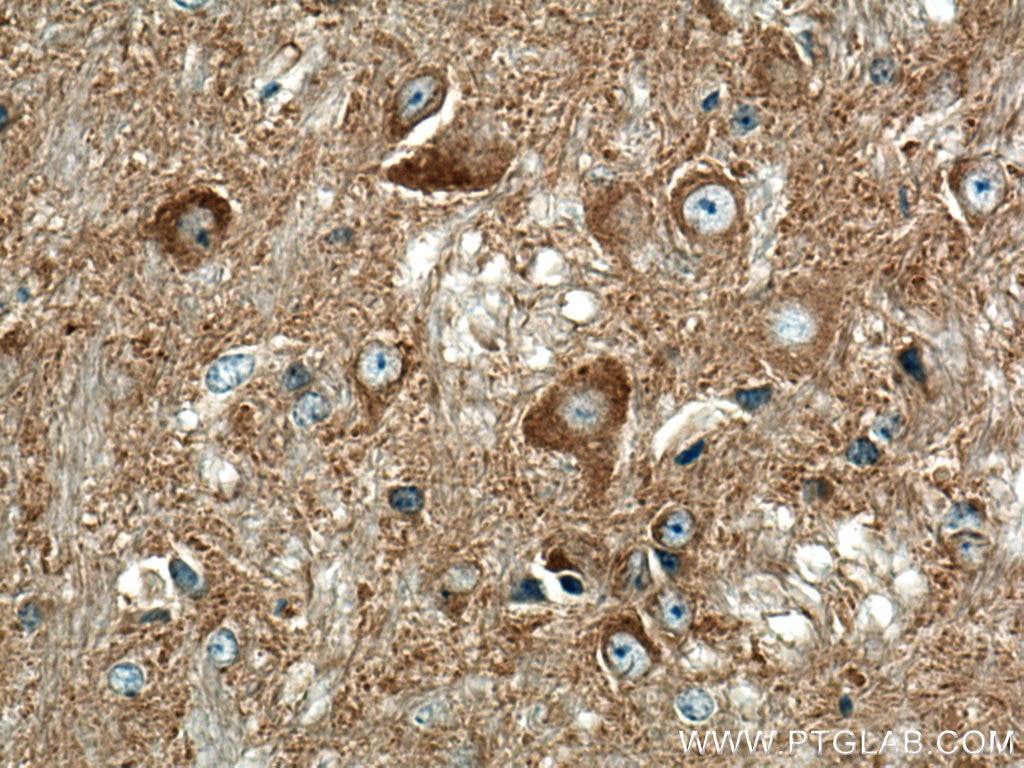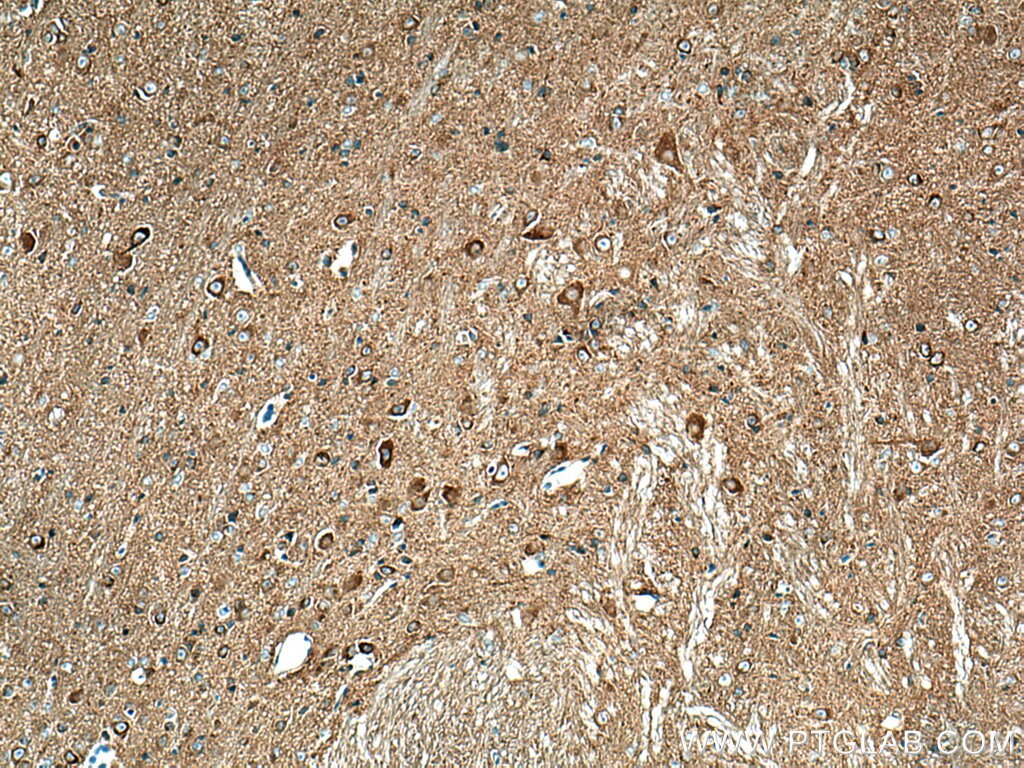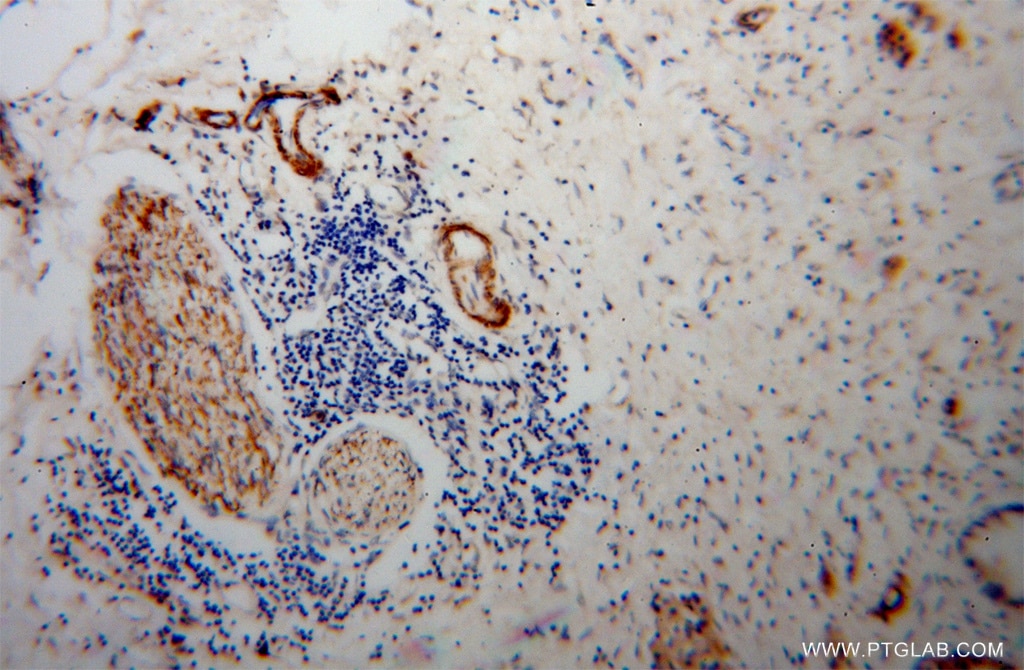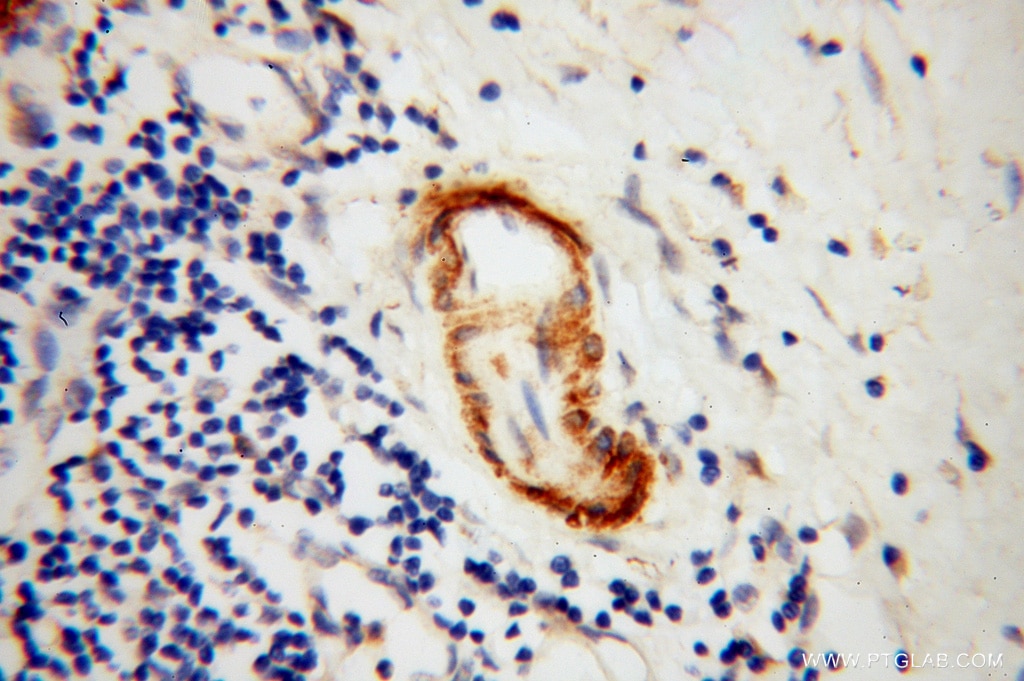- Phare
- Validé par KD/KO
Anticorps Polyclonal de lapin anti-Amphiphysin
Amphiphysin Polyclonal Antibody for WB, IHC, IP, ELISA
Hôte / Isotype
Lapin / IgG
Réactivité testée
Humain, rat, souris
Applications
WB, IHC, IF, IP, ELISA
Conjugaison
Non conjugué
N° de cat : 13379-1-AP
Synonymes
Galerie de données de validation
Applications testées
| Résultats positifs en WB | tissu cérébral de souris, tissu pulmonaire de souris |
| Résultats positifs en IP | tissu cérébral de souris |
| Résultats positifs en IHC | tissu cérébral de souris, tissu de cancer du pancréas humain, tissu de cervelet de souris il est suggéré de démasquer l'antigène avec un tampon de TE buffer pH 9.0; (*) À défaut, 'le démasquage de l'antigène peut être 'effectué avec un tampon citrate pH 6,0. |
Dilution recommandée
| Application | Dilution |
|---|---|
| Western Blot (WB) | WB : 1:500-1:3000 |
| Immunoprécipitation (IP) | IP : 0.5-4.0 ug for 1.0-3.0 mg of total protein lysate |
| Immunohistochimie (IHC) | IHC : 1:50-1:500 |
| It is recommended that this reagent should be titrated in each testing system to obtain optimal results. | |
| Sample-dependent, check data in validation data gallery | |
Applications publiées
| KD/KO | See 3 publications below |
| WB | See 9 publications below |
| IHC | See 7 publications below |
| IF | See 5 publications below |
Informations sur le produit
13379-1-AP cible Amphiphysin dans les applications de WB, IHC, IF, IP, ELISA et montre une réactivité avec des échantillons Humain, rat, souris
| Réactivité | Humain, rat, souris |
| Réactivité citée | Humain, souris |
| Hôte / Isotype | Lapin / IgG |
| Clonalité | Polyclonal |
| Type | Anticorps |
| Immunogène | Amphiphysin Protéine recombinante Ag4204 |
| Nom complet | amphiphysin |
| Masse moléculaire calculée | 695 aa, 76 kDa |
| Poids moléculaire observé | 115-125 kDa |
| Numéro d’acquisition GenBank | BC034376 |
| Symbole du gène | AMPH |
| Identification du gène (NCBI) | 273 |
| Conjugaison | Non conjugué |
| Forme | Liquide |
| Méthode de purification | Purification par affinité contre l'antigène |
| Tampon de stockage | PBS with 0.02% sodium azide and 50% glycerol |
| Conditions de stockage | Stocker à -20°C. Stable pendant un an après l'expédition. L'aliquotage n'est pas nécessaire pour le stockage à -20oC Les 20ul contiennent 0,1% de BSA. |
Informations générales
Amphiphysin (AMPH), a synaptic vesicle-associated protein that is highly concentrated in nerve terminal, is an autoantigen of Stiff-Man syndrome with breast cancer. Amphiphysin contains a N-terminal BAR (Bin1/Amphiphysin/Rv167) domain followed by an endocytosis domain, and a C-terminal SH3 domain. Amphiphysin has been proposed to function as a linker between the clathrin coat and dynamin in the endocytosis of synaptic vesicles. It may also participate in mechanisms of regulated exocytosis in synapses and certain endocrine cell types. (PMID: 8552632; 8245793; 10559861)
Protocole
| Product Specific Protocols | |
|---|---|
| WB protocol for Amphiphysin antibody 13379-1-AP | Download protocol |
| IHC protocol for Amphiphysin antibody 13379-1-AP | Download protocol |
| IP protocol for Amphiphysin antibody 13379-1-AP | Download protocol |
| Standard Protocols | |
|---|---|
| Click here to view our Standard Protocols |
Publications
| Species | Application | Title |
|---|---|---|
Nat Cell Biol Stromal-epithelial crosstalk regulates kidney progenitor cell differentiation. | ||
Development Canonical Wnt9b signaling balances progenitor cell expansion and differentiation during kidney development. | ||
Aging (Albany NY) Maternal high sugar and fat diet benefits offspring brain function via targeting on the gut-brain axis. | ||
Aging (Albany NY) A five-m6A regulatory gene signature is a prognostic biomarker in lung adenocarcinoma patients. | ||
J Cell Mol Med AMPH1 functions as a tumour suppressor in ovarian cancer via the inactivation of PI3K/AKT pathway.
|
